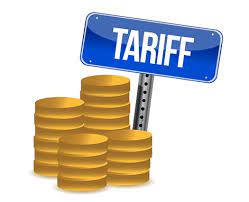A reduction of non-tariff barriers and easing of Covid-19 restrictions are combining well to boost commerce in the East Africa, as seen the continued growth of the economies.
This year, the EAC economies are expected to grow at 5.6 percent, compared with 5.1 last year.
Intra-EAC trade grew from $7.1 billion in 2019 to $9.5 billion in 2021. By September 2022, the EAC trade value was recorded at $10.17 billion, representing a 20 percent share of the global trade.
“Despite the devastation by the Covid-19 pandemic East Africa was the only region in Africa that escaped a recession in 2020,” said John Bosco Kalisa, CEO of the East Africa Business Council. “There has been significant reduction of NTBs, and our agriculture sector demonstrated a high level of resilience and performance is positive across the region.”
EABC says opening up the borders, especially between Uganda and Rwanda and Rwanda and Burundi, and efforts by Tanzania and Kenya to iron out trade disputes has helped increase movement of goods and people within the EAC.
Following the re-opening of the Katuna/Gatuna one-stop border post in January 2022, statistics show that 160 trucks and more than 1,000 people cross the border daily.
Kalisa said the decision by EAC partner states to reduce taxes on a number of items went a long way in supporting business recovery. Intra-EAC exports stood at $3.6 billion in 2021, having increased by 30 percent from $2.75 billion in 2020.
“The other factor is the decision by some countries to negotiate concessionary loan terms to boost economic units’ recovery. Rwanda, for instance, has the ‘manufacturing for recovery’ and they also have provided numerous fiscal incentives including lowering of some of the taxes,” said Kalisa.
Burundi reported a positive growth in its economy since the reopening of the border with Rwanda and the removal of economic sanctions by the EU.
“Following the removal of sanctions by the European Union and the United States of America, Burundi’s economy is on the right path,” said Denis Nshimirimana, Burundi Federal Chamber of Commerce and Industry.
“In fact, the Central Bank of Burundi lifted the ban on forex bureaus in October 2022. These positive developments are set to ease access to forex for businesses.”
Burundi’s imports from the EAC bloc in 2021 stood at $199.8 million and exports at $15 million, according to the International Trade Centre.
EAC Secretary-General Dr Peter Mathuki attributed the increase in intra-regional trade to political goodwill among the members.
“A high-level discussion among the heads of state eliminated many NTBs. Some 257 NTBs have been resolved since 2007. This is in tandem with the bloc’s goal to increase the volumes of intra-regional trade,” Dr Mathuki said.
The adaptation of the fourth band of EAC Common External Tariff (35 percent) has also contributed to the increase in EAC trade.
CET is one of the key instruments under the Customs Union pillar, which justifies regional integration through uniform treatment of goods imported from third parties.
Since July 2022, imports of locally available goods into the region, such as meat, furniture and textiles, have been attracting a tariff of 35 percent.




